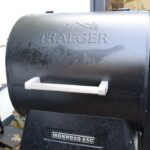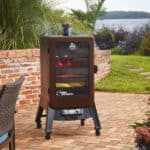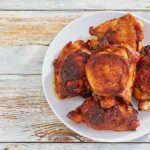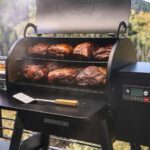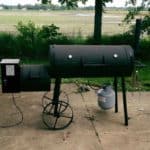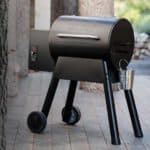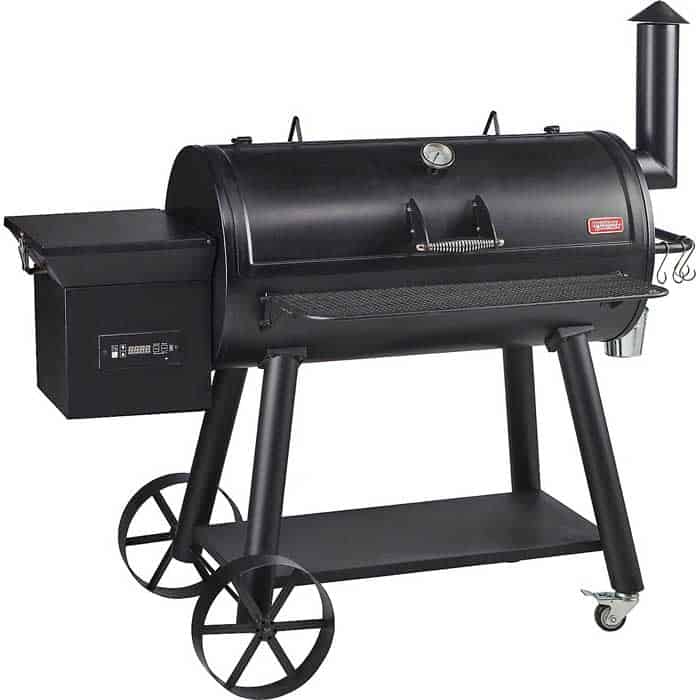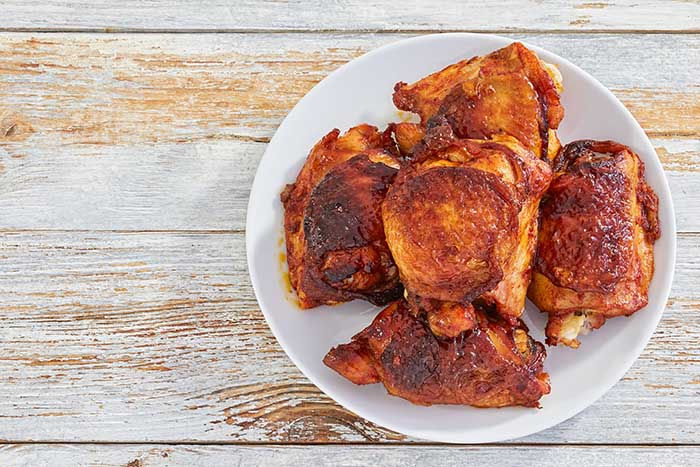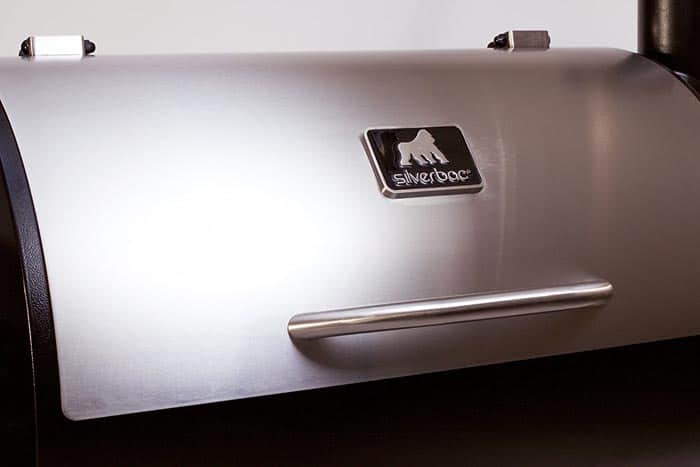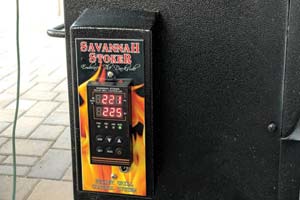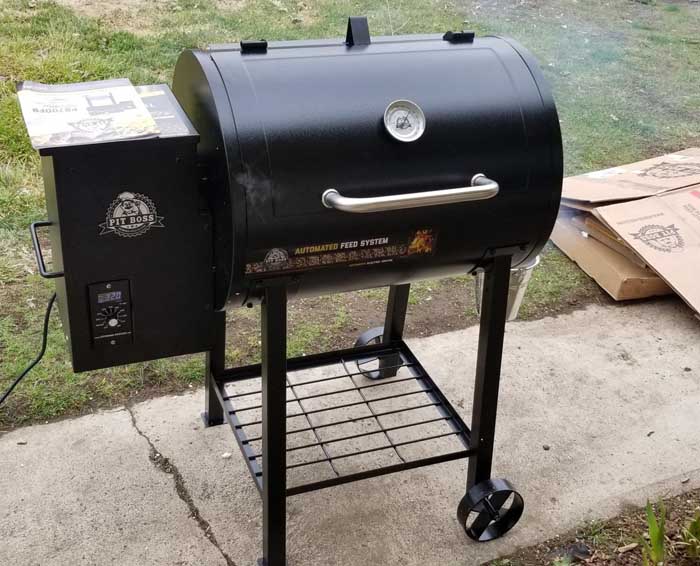Discover expert tips on using a Traeger in the rain with our in-depth wet weather pellet grill guide. Learn about essential rain protection, maintaining your grill’s performance in wet conditions, and the best accessories for rainy day pellet grilling.
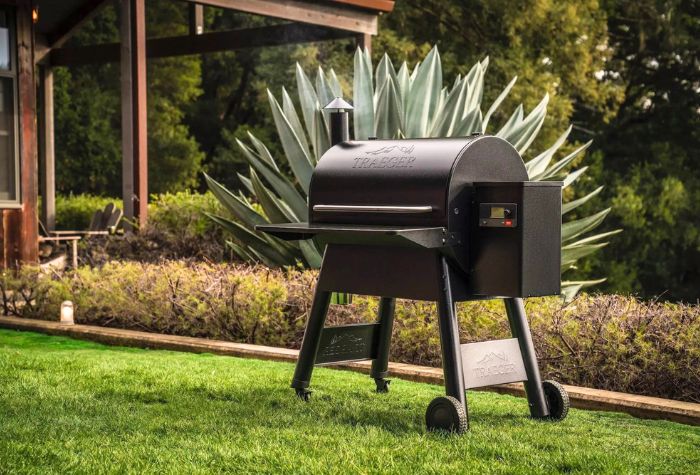
You’ve planned the perfect barbecue: the guests, the drinks, the meal, the rain… wait, what? Yep, a change in the weather forecast can really put a damper on your plans. But before you cancel everything, there’s good news. After all, a little rain never hurt anyone, right?
From essential rain protection to handy tools and accessories to save your grill, here’s everything you need to know about using your Traeger in the rain.
Can You Use a Traeger in the Rain?
In short, yes. Traeger pellet grills can be used in the rain as long as the water spray is at less than a 60-degree angle from vertical. Translation: if it’s a light shower or drizzle, you’re good to go. But if it’s a howling tempest with horizontal rain, forget about it.
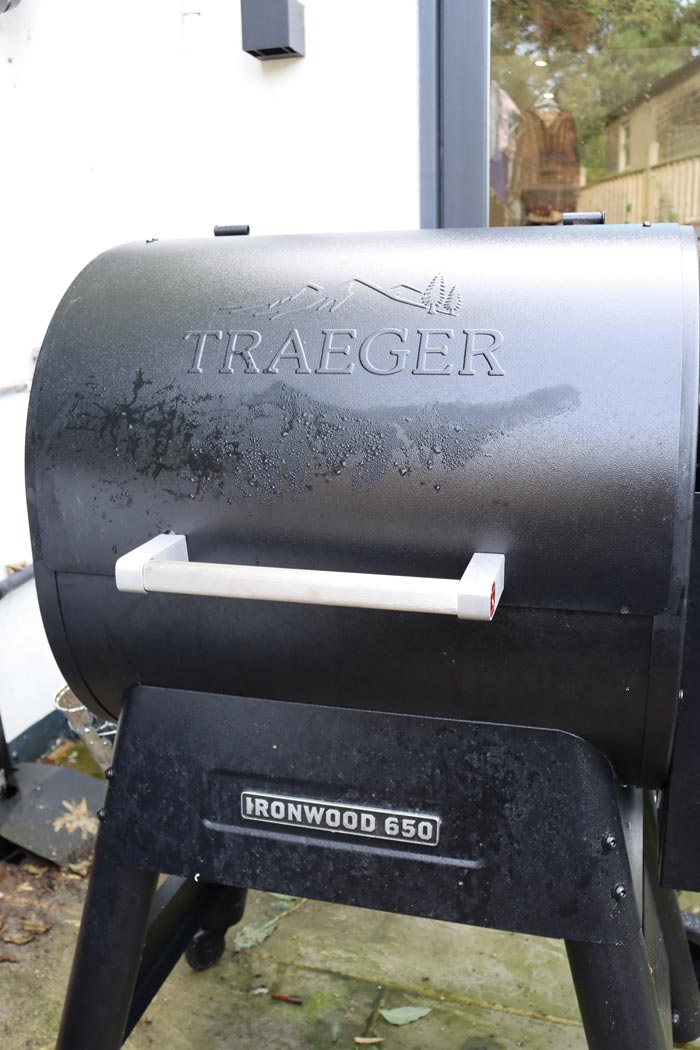
Challenges Posed by Using a Pellet Grill in Rainy Weather
Firing up any type of grill in the rain comes with some standard challenges. Figuring out how to stay relatively dry while operating the grill; ensuring that the food doesn’t end up soggy; and trying to convince others that the best place to drink a refreshing beer is next to the pellet grill, weather be damned.
However, if you’re using a Traeger grill (or any type of pellet grill for that matter), the inclement weather comes with some unique challenges.
Electrical Components
Pellet grills need electricity to power the control panel, the heating element, and the auger (the mechanism that feeds the pellets). Electricity should always be used with caution in wet conditions. Contact between electrical components and moisture can lead to electrical shorts, grill malfunction, or even electrical shock.
While the control panel is water-resistant, this isn’t the same as being waterproof, and prolonged exposure to heavy rain might result in moisture seeping into the control box.
Rust & Corrosion
Just like any form of wet weather grilling, some risks posed by using your pellet grill in the rain are more long-term in nature. Repeated exposure to rain might result in the metal parts becoming rusty or corroded over time. Your grill boasts a fair bit of metal—the cooking chamber, grates, hopper, and exterior surfaces—that can be compromised if allowed to become rusty.
Waterlogged Pellets
If the pellets become exposed to moisture, they rapidly transform into a mass of soggy sawdust. This not only makes them essentially useless, but they can also cause damage to your grill. Damp pellets have reduced combustibility, which leads to inconsistent heat generation and poor smoke production. The pellets are also likely to jam the augers if they are wet, causing your Traeger’s auger to stop turning due to a jam.
Poor Performance
Overall, the performance of your grill in rainy conditions might not be as reliable as you’ve become accustomed to in sunny conditions. Increased humidity might result in slower ignition and, due to the coolness of the rain, the grill might not reach or maintain the desired temperatures.
How to Protect Your Traeger Pellet Grill
If you know you’re going to be grilling in the rain, you can take the necessary precautions to ensure that your Traeger pellet grill is as protected as possible. An unexpected downpour is a little harder to navigate if you’ve already got the grill up and running. So, if you’re worried about rain at all, prepare for the worst!
You want to set your grill up in an area that provides both shelter and ventilation. If you have a covered patio, this would be ideal. Otherwise, some sort of gazebo or makeshift canopy should do the trick. What you’re looking to do here is provide protection from direct exposure to the rain. Ideally, you want to position the grill in such a way that any electrical parts are protected from exposure to moisture.
To reduce the risk of any electrical mishaps, make sure that your pellet grill is plugged into a grounded GFCI (Ground Fault Circuit Interrupter) outlet. If you need to use an extension cord, use one that’s rated for outdoor use and avoid running it across areas that might be prone to puddles if it starts to rain.
Moisture can interfere with the ignition mechanism in the pellet grill, so it’s a smart move to ensure that the firepot is free of sawdust and old ash before you get started as this will facilitate easier ignition.
As we mentioned above, wet pellets are going to ruin your barbecue (and possibly even your pellet grill), so you want to check the seal on your pellet hopper to ensure that it’s free of any kind of wear that might let in moisture. Make sure that you have enough pellets in the hopper for the barbecue you have planned so that you don’t have to risk opening it to add more pellets in the middle of the cook.
Finally, while you’re busy with the grill, keep an eye on the grease trap. That little metal bucket that catches the grease significantly reduces the time and effort you need to spend on cleaning your pellet grill. However, if you don’t notice it filling up with rainwater, you might end up with a big greasy mess on your hands. So, check it regularly and empty it before it overflows.
Adjust Your Grilling Technique for the Rain
From a grilling perspective, the biggest challenge with rainy weather comes in the form of temperature instability. Even if you manage to keep all the important stuff dry—the pellets, the electronics, most of the food—opening the lid of the grill is going to cause a big change in temperature in the cooking chamber as the hot air rushes out and cold (potentially wet) air rushes in. This change in temperature can lead to unevenly cooked food. Err on the side of caution and open the lid of the grill as little as possible during the cook. Because grilling in the rain can be a little more unpredictable than usual, cook to temperature rather than by time.
Essential Accessories to Help With Grilling in the Rain
Wireless Meat Thermometer
So how exactly do you go about checking the internal temperature of your meat if you can’t open the grill? The answer is a wireless meat thermometer. Certain models of Traeger pellet grills come fitted with WiFire features that allow you to track the cooking temperature and the internal temperature of your meat via an app on your phone. If your pellet grill is an older model, don’t despair. You can still invest in a wireless thermometer and download a compatible app.
A Cover for Your Grill’s Hopper
When it comes to protecting your hopper from the rain, the best option you have is to invest in one of Traeger’s specifically designed waterproof hopper covers. But, in a pinch, you can create a makeshift cover out of a plastic bag or a towel (make sure that these don’t come into contact with any of the grill’s hot surfaces).
An Insulation Blanket for Your Grill
Traeger has just the thing to keep your grill cozy in the rain: a specifically designed insulation blanket that reduces the impact of the rain and colder temperatures on the cooking chamber. Better temperature stability makes for a better barbecue.
Outdoor Accessories
If you haven’t already done so, this is a good time to invest in an outdoor-rated extension cord. These extension cords have better insulation than indoor extension cords and can withstand sunlight, moisture, and temperature changes. A pop-up gazebo or canopy is also a smart investment for any pitmaster as it can be used come rain or shine. Opt for one that’s at least 10 x 10 feet to ensure adequate space and ventilation.
FAQs
How do I prevent my grill from rusting if I use it frequently in the rain?
The best way to prevent rust is to ensure that you clean up properly after any barbecue. Remove any leftover ash, grease, or morsels of food from the grill and then wipe down the entire grill with a clean dry cloth. Make sure the grill is completely cool and dry before putting on a cover and putting it into storage. Ideally, you want to store your grill somewhere that’s protected from the elements, but if this isn’t possible, be sure to cover it with a waterproof cover.
Do I need to adjust cooking times when grilling in wet conditions?
Because rain can result in temperature fluctuations in the cooking chamber of the grill, it’s better to monitor the internal temperature of the meat rather than relying solely on cooking times. A great way to do this is to buy yourself a wireless thermometer.
What should I do if water gets inside my Traeger grill?
If water gets inside your grill—hopefully not anywhere that it might interfere with electrical circuits—be sure to thoroughly clean and dry the grill after use to prevent any lingering moisture that might result in rust.
